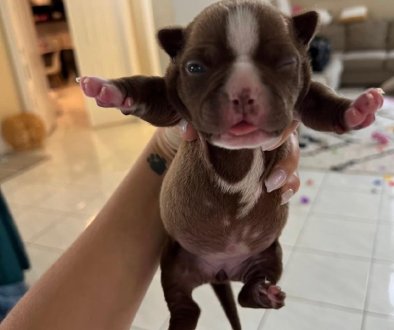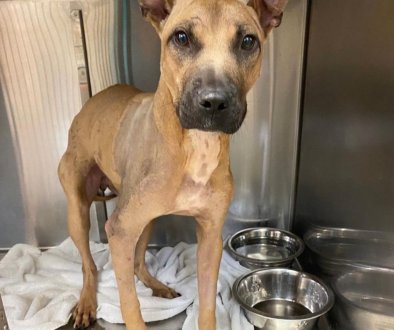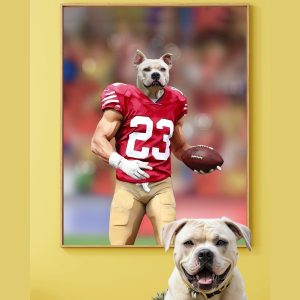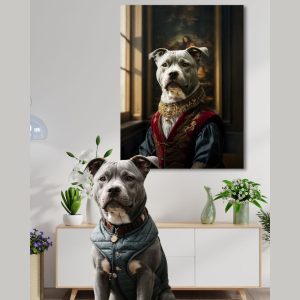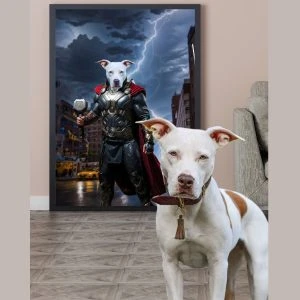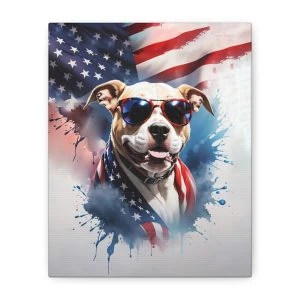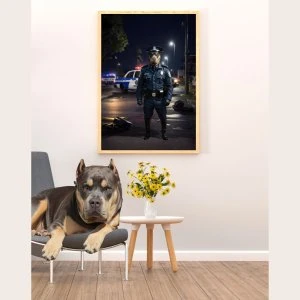Which Dogs Are Considered Bully Breeds?
If you have any interest in dogs, you’ve surely heard about bully breeds. But what are bully breed dogs, exactly? What makes a dog a bully breed? And what kind of dogs are they? There’s also a good chance you’ve heard rumors about bully dogs—perhaps you’ve heard that they’re aggressive, or unpredictable, or maybe you’ve heard that they’re actually loving, loyal companions.
We wrote this post to set the record straight on bully breed dogs, which are among our favorite dog breeds in the world. Read on to learn more about these wonderful yet frequently misunderstood dogs, along with some advice for anyone who’s interested in becoming a bully breed owner.
Why Are They called Bully Breeds?
The term “bully dog” refers to a group of dog breeds that share a common ancestry and have similar physical characteristics. These breeds are generally descendants of the Old English Bulldog and were originally bred for various purposes, such as bull-baiting, dogfighting, and as working or companion animals. Today, bully breeds are known for their unique appearance, strength, and loyalty. It’s important to note that the term “bully” does not mean that these dogs are inherently aggressive or mean-spirited. In fact, most bully breeds have a friendly and loving temperament.
What are the Physical Characteristics of Bully Breeds?
Bully breeds share several physical traits that make them easily identifiable. Some common features include:
- Muscular, stocky build. Bully breeds typically have a strong, sturdy frame and well-developed muscles, giving them a powerful appearance.
- Broad chest and shoulders. These dogs have wide chests and shoulders, which contribute to their overall strength and stability.
- Square-shaped head. Bully breeds often have a distinct square-shaped head with a wide, flat forehead and a short, broad snout.
- Wrinkled skin. Many bully breeds have loose, wrinkled skin, particularly around the face and neck.
- Short coat. Most bully breeds have a short, dense coat that requires minimal grooming.
What is the Temperament of a Bully Dogs?
Despite their tough appearance, bully breeds are generally known for their loving, friendly, and loyal nature. Some common temperament traits include:
- Affectionate. Bully breeds are known for their strong bond with their owners and love being part of a family.
- Intelligent. These dogs are quick learners and can be easily trained with positive reinforcement techniques.
- Protective. Due to their loyalty, bully breeds can be protective of their family and home, making them excellent watchdogs.
- Energetic. Many bully breeds have high energy levels and require regular exercise to stay happy and healthy.
- Sociable. With proper socialization, bully breeds can get along well with other dogs and animals.
Bully dogs are a diverse group of breeds with unique physical characteristics and temperaments. Despite their tough appearance, these dogs are often friendly, loyal, and loving companions. It’s essential to remember that every dog is an individual, with their own unique personality and behavior.
Why Were Bully Breeds Created?
Bully breeds are descendants of the ancient Molosser dogs that originated in Greece. Molossers were large, powerful canines known for their exceptional strength, courage, and loyalty, making them excellent guardians and protectors. These dogs were employed in a variety of roles, including livestock herding, military duties, and even as companions to royalty. As the Molosser breed diversified, they spread across Europe and Asia, influencing the development of numerous modern dog breeds.
These dogs were originally bred in England for the purpose of bull-baiting, a sport in which dogs were pitted against bulls in a brutal contest of strength and endurance. In the early 19th century, bull-baiting was outlawed in England, and breeders turned their attention to developing dogs that were better suited for other purposes.
In the early 20th century, the bully breed was brought to the United States, where it quickly gained popularity. These dogs were valued for their strength and agility, and they were used for a number of different purposes, from hunting to police work. In the 1970s, however, the breed began to face a new challenge: a reputation for aggression and violence.
In the years that followed, the bully breed became increasingly controversial. Some people saw these dogs as dangerous and unpredictable, while others viewed them as loyal and affectionate family pets. The breed became the subject of much debate, with advocates on both sides of the issue arguing over the best way to handle the breed.
Today, the bully breed remains a popular choice for dog owners around the world. These dogs are known for their loyalty, strength, and affectionate nature, and they continue to be used for a variety of different purposes. Despite their sometimes-controversial reputation, the truth is that the bully breed is a loving and valuable member of the canine community.
5 Myths About Bully Breeds
Bully breeds often face prejudice and misunderstanding due to misconceptions about their nature and temperament. These dogs are frequently labeled as aggressive or dangerous. Let’s address some common misconceptions about bully dogs and provide evidence-based information to dispel these myths, helping you better understand the truth about these loyal and affectionate breeds.
1. Bully Dogs are Aggressive and Dangerous
One of the most pervasive misconceptions about bully breeds is that they are inherently aggressive and pose a danger to humans. However, this belief is unfounded and not supported by scientific evidence.
Fact: Studies have shown that aggressiveness in dogs is not breed-specific, but rather influenced by various factors such as genetics, upbringing, and socialization. In fact, the American Temperament Test Society, which tests dog breeds’ temperaments, consistently shows that many bully breeds score higher in terms of stability and friendliness than some other popular breeds.
(See the ATTS breed statistics here.)
2. Bully Dogs Have “Locking Jaws”
Another common myth is that bully breeds have “locking jaws,” meaning that once they bite, their jaws lock into place, making it impossible to release their grip.
Fact: There is no scientific evidence to support the existence of “locking jaws” in any dog breed. Bully breeds, like all dogs, have powerful jaw muscles, but their anatomy does not differ significantly from other breeds in terms of jaw structure or function.
3. Bully Breeds Are Unpredictable
Some people believe that bully breeds are unpredictable and can suddenly become aggressive without warning.
Fact: Like any dog, bully breeds can exhibit aggressive behavior if they feel threatened or provoked, but this is not unique to these breeds. Proper socialization and training from an early age can help ensure that bully breeds become well-adjusted and well-behaved pets.
(Related: Can you take your pit bull to a dog park?)
 4. Bully Dogs are Not Good with Children
4. Bully Dogs are Not Good with Children
There is a misconception that bully breeds are not suitable for families with children due to their perceived aggressiveness.
Fact: Many bully breeds, such as the Boxer and American Staffordshire Terrier, are known for their affectionate, gentle nature and can make excellent family pets. When properly socialized and supervised, bully breeds can form strong bonds with children and become loyal, protective companions.
5. Bully Breeds Are Only Suitable for Experienced Dog Owners
Some people believe that bully breeds are only suitable for experienced dog owners due to their strength and potential for aggression.
Fact: While it is true that bully breeds require consistent training and socialization, they can be perfectly suitable pets for first-time dog owners who are committed to investing the time and effort needed to raise a well-adjusted dog. Many bully breeds are intelligent, eager to please, and highly trainable, making them excellent companions for dedicated owners.
Misconceptions about bully dogs have led to unfair stereotypes and breed-specific legislation in some areas. By understanding the truth about these breeds and sharing evidence-based information, we can help dispel these myths and promote a more accurate, compassionate view of these loyal, affectionate dogs.
Which Breeds Are Considered Bully Dogs?
Next, we’ll list and describe the breeds typically considered “bully dogs” and discuss their unique characteristics. Let’s start with some of the more common bully breeds:

American Pit Bull Terrier
Physical Appearance: The American Pit Bull Terrier is a medium-sized, muscular dog with a short coat and a broad, flat head. They have wide-set eyes and a strong, powerful jaw.
Temperament: Despite their reputation, American Pit Bull Terriers are generally friendly, affectionate, and loyal dogs. They are intelligent and eager to please, which makes them highly trainable.
History: Originally bred in England, the American Pit Bull Terrier was brought to the United States in the 1800s. They were used for various purposes, including farming, hunting, and as family companions.

Staffordshire Bull Terrier
Physical Appearance: The Staffordshire Bull Terrier is a medium-sized, stocky breed with a short, smooth coat. They have a broad head, strong jaw, and a muscular build.
Temperament: Staffordshire Bull Terriers are known for their affectionate, playful nature and their love of children. They are intelligent and trainable, making them excellent family pets.
History: The Staffordshire Bull Terrier originated in England, where they were bred for bull-baiting and dogfighting. After these sports were banned, the breed was refined and developed as a companion animal.

American Bully
Physical Appearance: The American Bully is a medium to large-sized breed with a muscular, stocky build. They have a broad head, short snout, and a thick, strong neck.
Temperament: American Bullies are friendly, affectionate, and loyal dogs. They are intelligent and highly trainable, making them suitable for various roles, including therapy and service work.
History: The American Bully was developed in the United States in the late 20th century. It was created by crossing the American Pit Bull Terrier with other bully breeds and non-bully breeds to create a unique, versatile companion dog.
Learn more about the American Bully Standards for sizes.

Boxer
Physical Appearance: Boxers are medium to large-sized dogs with a muscular, square build. They have a short coat, a broad, flat head, and a distinctive wrinkled forehead.
Temperament: Boxers are known for their playful, energetic nature and their love of people. They are intelligent, trainable dogs that make excellent family pets.
History: The Boxer originated in Germany, where it was bred as a working dog for tasks such as hunting and herding. The breed later gained popularity as a family pet and show dog.

English Bulldog
Physical Appearance: The English Bulldog is a medium-sized, stocky breed with a distinctive wrinkled face, short legs, and a broad, muscular body.
Temperament: English Bulldogs are known for their easygoing, affectionate nature. They are generally friendly with people and other animals, making them suitable family pets.
History: The English Bulldog was originally bred in England for bull-baiting. After this sport was banned, the breed was refined to create the gentle, companionable dog we know today.
These breeds are often associated with the term “bully dog” due to their common ancestry and similar physical characteristics. Despite some negative stereotypes, bully breeds are generally friendly, loyal, and affectionate dogs that can make excellent companions for the right owner.
But that’s just the beginning! There are many different breeds of bully dogs, some of which can even be hard to distinguish from one another.
American Bulldog
A strong, muscular breed with a powerful build, known for its athleticism and bravery.
Alapaha Blue Blood Bulldog
A rare breed with a muscular, stocky body, prized for its intelligence and loyalty.
American Staffordshire Terrier
A medium-sized, muscular breed with a short coat, known for its intelligence and friendly nature.
American Bandogge Mastiff
A large, powerful breed with a strong, muscular build, bred for its protective instincts and guarding capabilities.
Australian Bulldog
A medium-sized, muscular breed with a strong build, known for its friendly and loyal nature.
Banter Bulldogge
A medium-sized breed with a muscular build, bred for its agility, playfulness, and affectionate temperament.
Boerboel
A large, strong breed with a muscular build, bred for its guarding capabilities and loyalty to its family.
Bordeaux Mastiff
A powerful, muscular breed with a distinctive wrinkled face, known for its loyalty and protective instincts.
Bull Terrier
A medium-sized breed with a distinctive, egg-shaped head and muscular build, known for its agility and strength.
Bullmastiff
A large, powerful breed with a strong, muscular build, bred for its guarding capabilities and loyalty to its family.
Ca de Bou
A medium-sized, muscular breed with a strong build, known for its agility, protective instincts, and loyalty.
Cane Corso Italiano
A large, powerful breed with a muscular build, known for its protective instincts and loyalty to its family.
Catahoula Bulldog
A medium-sized, athletic breed with a muscular build, known for its intelligence, loyalty, and herding capabilities.
Dogo Argentino
A large, powerful breed with a muscular build, bred for its strength and hunting capabilities.
Dogue de Bordeaux
A large, powerful breed with a distinctive wrinkled face, known for its loyalty and protective instincts.
Fila Brasileiro
A large, powerful breed with a muscular build, known for its protective instincts and loyalty to its family.
French Bulldog
A small to medium-sized breed with a muscular build, known for its distinctive bat-like ears and affectionate nature.
Great Dane
A giant breed with a muscular build, known for its friendly nature and impressive size.
Irish Staffordshire Bull Terrier
A medium-sized, muscular breed with a short coat, known for its intelligence and friendly nature.
Mastiff
A giant breed with a muscular build, known for its strength, loyalty, and gentle temperament.
Neapolitan Mastiff
A large, powerful breed with a distinctive wrinkled face, known for its loyalty and protective instincts.
Olde English Bulldogge
A medium-sized breed with a strong, muscular build, bred for its agility and friendly temperament.
Pug
A small breed with a stocky build and distinctive wrinkled face, known for its playful and affectionate nature.
Rottweiler
A large, powerful breed with a muscular build, known for its intelligence, loyalty, and protective instincts.
Spanish Alano
A medium to large-sized breed with a strong, muscular build, known for its bravery, loyalty, and guarding capabilities.
Standard Bull Terrier
A medium-sized breed with a distinctive, egg-shaped head and muscular build, known for its agility and strength.
Tosa Inu
A large, powerful breed with a muscular build, bred for its strength and guarding capabilities.
Valley Bulldog
A medium-sized breed with a strong, muscular build, known for its intelligence, loyalty, and friendly nature.
Victorian Bulldog
A medium-sized breed with a stocky, muscular build, bred for its agility and friendly temperament.
White English Bulldog
A medium-sized breed with a muscular build and a short coat, known for its loyalty, courage, and friendly nature.
Exotic Bully
A compact and muscular designer breed with exaggerated features, bred for a distinctive appearance.
Black Panther Pit Bull
An athletic and muscular Pit Bull variety known for its sleek, jet-black coat and powerful presence.
Merle American Pitbull Terrier
A strong and agile breed characterized by its unique and eye-catching coat patterns, featuring irregular patches of color.
Micro American Bullies (Pocket Bullies)
A smaller, more compact version of the American Bully, designed for their convenient size while retaining their breed’s muscular build.
Razor Edge Pitbulls
Well-muscled dogs with a blocky head and a friendly, affectionate temperament, bred for a more balanced and family-friendly demeanor.
Blue Fawn Pit Bull
A strikingly beautiful variety of Pit Bull, featuring a unique blue-gray coat with a fawn undercoat and distinctive blue eyes.
Gotti Pitbulls
Stocky and muscular dogs with a short and wide build, resulting from the combination of Grey Line and Gottiline bloodlines.
Tri Pit Bull
A visually stunning Pit Bull variety showcasing a tricolor coat, with three distinct colors that can include black, white, blue, and shades of fawn or red.
American Pit Bull Brindle
A strong and athletic breed known for its brindle coat, which features a striking tiger-stripe pattern of dark and light colorations.
Colby Pitbull
A highly regarded and historic bloodline of Pit Bull, distinguished by its muscular physique, intelligence, and unwavering loyalty.
Bully Kutta
A large and powerful dog breed originating from the Indian subcontinent, known for its immense strength, courage, and protective instincts.
Are Bully Dogs Right for You?
Next, we’ll discuss the pros and cons of owning a bully dog, and provide tips for potential owners who are considering adopting one.
Pros of Owning a Bully Breed Dog
- Loyalty. Bully breeds are known for their strong bond with their owners and their loyalty to their families.
- Trainability. These intelligent dogs are quick learners and can be easily trained using positive reinforcement techniques.
- Protective. Due to their loyalty, bully breeds can make excellent watchdogs and can be protective of their family and home.
Cons of Owning a Bully Breed Dog
- Aggression. Although most bully breeds have a friendly and loving temperament, some may exhibit aggressive tendencies if not properly socialized and trained.
- Breed-specific legislation. In some areas, bully breeds face restrictions due to breed-specific legislation, which may include mandatory spaying/neutering, muzzling in public, or even breed bans.
- Exercise requirements. Many bully breeds have high energy levels and require regular exercise to stay happy and healthy. This may be challenging for owners with limited time or mobility. (Get our best tips on how to exercise your dog.)
5 Tips for Potential Owners of a Bully Breed Dog
1. Research
Before adopting a bully breed, make sure to research the specific breed you are interested in to ensure it is the right fit for your lifestyle and living situation. It also pays to be aware of the most common pitbull health issues.
2. Find a reputable breeder
If you decide to adopt a bully breed puppy, make sure to find a reputable breeder who prioritizes the health and temperament of their dogs. Avoid purchasing from pet stores or online sellers, as these sources often support puppy mills.
3. Consider adoption
Consider adopting a bully breed from a rescue organization or shelter. These dogs may be in need of a loving home, and adopting can help reduce the number of dogs in shelters.
4. Use a professional trainer
Working with a professional trainer experienced in bully breeds can help ensure proper socialization and training for your new pet. This can help prevent behavioral issues and ensure a well-adjusted, well-behaved dog.
5. Consider breed-specific legislation
Before adopting a bully breed, research your local laws and regulations regarding these dogs. Be prepared to comply with any breed-specific legislation in your area, and consider the potential challenges that may come with owning a breed that faces restrictions.
(Related: 6 tips on buying a pit bull puppy)
Bully dogs can make wonderful pets, but potential owners should carefully consider the pros and cons before adopting one. By doing thorough research, finding a reputable breeder or adopting from a shelter, and working with a professional trainer, you can ensure that your bully dog becomes a well-adjusted and loving member of your family.
Welcome to the Wonderful World of Bully Dogs!
As you can see, bully breed dogs have a long and interesting history. They’ve been subject to unfair and undeserved stereotypes, though they remain a wonderful breed full of loyalty and love for their owners. Bully dogs may not be right for everyone, but rest assured that if you bring one into your life, they’ll be among the most loyal and dependable companions you’ve ever met.
Like this article? Share it with a friend to help spread the word!
Source link

Mandy has lived with pitbulls her whole life, and she has amassed a wealth of experience and knowledge about these magnificent animals. Having had the pleasure of owning and caring for numerous pitbulls over the years, she has come to understand their unique characteristics, behaviors, and needs. Read more


 4. Bully Dogs are Not Good with Children
4. Bully Dogs are Not Good with Children